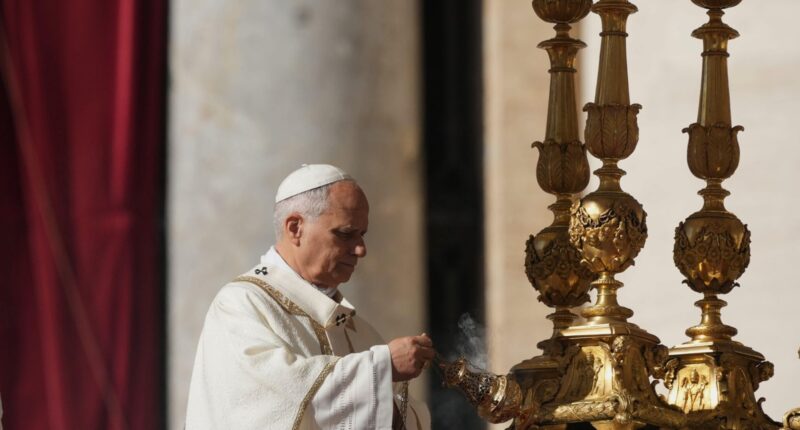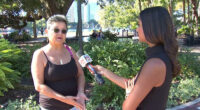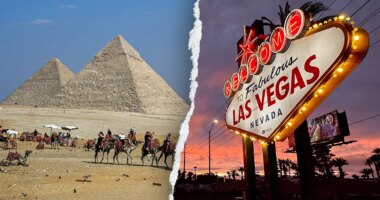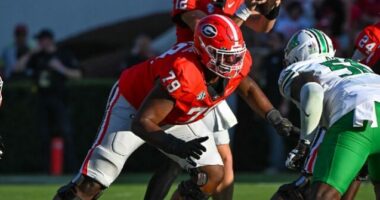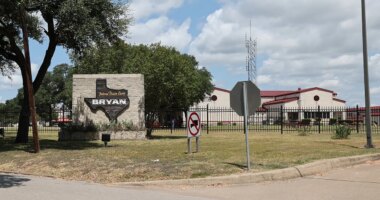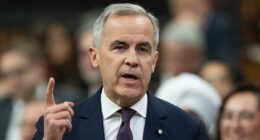Share this @internewscast.com
In a solemn ceremony at the heart of Vatican City, Pope Leo XIV on Saturday conferred one of the Catholic Church’s most prestigious honors on St. John Henry Newman. This 19th-century British convert and theologian was declared a doctor of the church, an accolade that positions him as an exemplary figure for Catholic educators worldwide.
To date, only 37 individuals have received the title of “doctor” in the Catholic Church’s extensive 2,000-year history. With this honor, Newman joins an elite group that includes towering Christian figures such as St. Augustine, St. Therese of Lisieux, and St. John of the Cross.
This distinguished title acknowledges Newman’s universal appeal and his significant, enduring contributions to the understanding of the Christian faith. His legacy is celebrated in both Anglican and Catholic circles, highlighting his profound influence across diverse religious communities.
Newman, originally a theologian and poet within the Church of England, gained prominence for his insightful writings and sermons on the development of doctrine, the pursuit of truth, and the essence of a university. His conversion to Catholicism in 1845, driven by a deep commitment to his conscience despite considerable personal sacrifice, has earned him admiration from both conservative and progressive quarters.
During a special Holy Year Mass dedicated to Catholic teachers and students, Pope Leo XIV not only recognized Newman as a doctor of the church but also named him a co-patron of Catholic education, sharing this esteemed role with St. Thomas Aquinas. This appointment underscores Newman’s significant impact on educational thought within the church.
The choice of Newman holds historical resonance, as it was Pope Leo XIII, Pope Leo XIV’s namesake, who elevated Newman to the rank of cardinal following his conversion. Moreover, it was the earlier Pope Leo who declared Aquinas a doctor of the church and the patron of Catholic education, thus forging a tangible link between these eminent figures in the church’s educational legacy.

A model for educators
Leo’s decision to hold out Newman as a model for Catholic educators suggests that Catholic teaching will be a priority for him going forward, especially as he emphasizes the ethical use of artificial intelligence for future generations.
Earlier this week, Leo penned a new document that cited Newman in his call for Catholic schools to be places for spiritual growth and community, and where the use of technology always keeps human dignity front and center.
In his homily, Leo quoted from Newman’s most famous text, the beloved British hymn “Lead, Kindly Light,” to urge that Catholic educators “shine like stars in the world” in the collective search for truth.
“The task of education is precisely to offer this Kindly Light to those who might otherwise remain imprisoned by the particularly insidious shadows of pessimism and fear,” he said. “We are called to form people, so that they may shine like stars in their full dignity.”
The Catholic Church is one of the world’s leading players in education, operating more than 225,000 primary and secondary schools and enrolling some 2.5 million students at Catholic universities around the globe, according to Vatican statistics.
Leo was educated by the Augustinians, taught math and physics, and is a member of the Augustinian religious order, which places a special emphasis on St. Augustine’s search for truth and the command “Tolle, lege,” which translates from Latin as “Take up and read.”
A model for the information age
The Rev. George Bowen, the postulator who oversaw Newman’s canonization and designation as a doctor, said Newman too was confronted with the 19th-century equivalent of the information age, when cheap periodicals were readily available and reading rates shot up. Newman insisted on the need for a wholistic liberal education that included Catholic theology, but also focused on students and teachers interacting in a relational way in the quest for truth and knowledge, he said.
“Suddenly, the world was swimming with information,” Bowen told reporters. “So Newman’s ways of coping with this huge ocean of knowledge and making sense of it, having a connected view, is something very, very relevant today.”
When Newman defected from the Church of England to the Catholic Church in 1845, he lost friends, work and even family ties, believing the truth he was searching for could only be found in the Catholic faith.
Cherished by both Anglicans and Catholics
And yet even today, Newman remains beloved in the Church of England. His hymns were sung last week in the Sistine Chapel when King Charles III prayed alongside Leo in the historic ecumenical service.
Several important Anglican leaders wrote to the Vatican, supporting his designation as a church doctor, and the Anglican archbishop of York was invited to participate in Saturday’s service. It featured the hymn, “Lead, Kindly Light,” which remains a fixture of Anglican services.
“Newman is a big ecumenical figure in the sense that he owes his faith to his upbringing in the Church of England,” Bowen said.
Paul Shrimpton, a leading Newman scholar at Magdalen College, Oxford, said it was significant that each of the last popes had promoted Newman in his remarkably quick path to being declared a doctor of the church, underlining his universal appeal to progressive and liberals alike.
St. John Paul II declared him venerable in 1991, in the first step to possible sainthood; Pope Benedict XVI beatified him during a 2010 visit to Birmingham, England; Pope Francis canonized him in 2019 with Charles in the audience, and now Leo declared him a church doctor.
“I think that speaks volumes,” said Shrimpton, who contributed an essay on Newman’s influence on Catholic education for the official Vatican dossier, or “positio” that made the case for him to be declared a doctor. “All very different popes show that he is part of the universal teaching of church.”
___
Associated Press religion coverage receives support through the AP’s collaboration with The Conversation US, with funding from Lilly Endowment Inc. The AP is solely responsible for this content.
.
